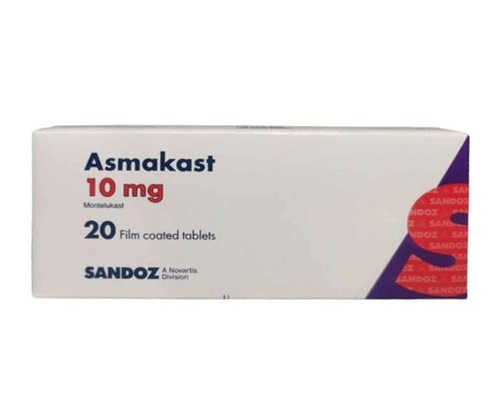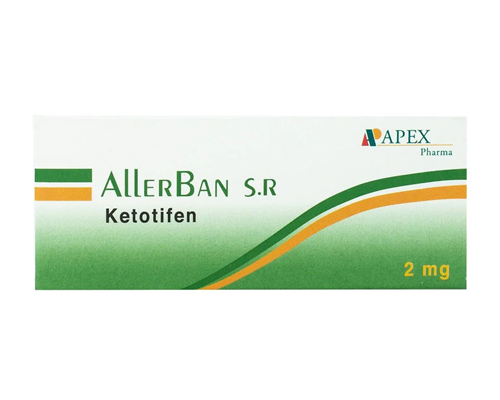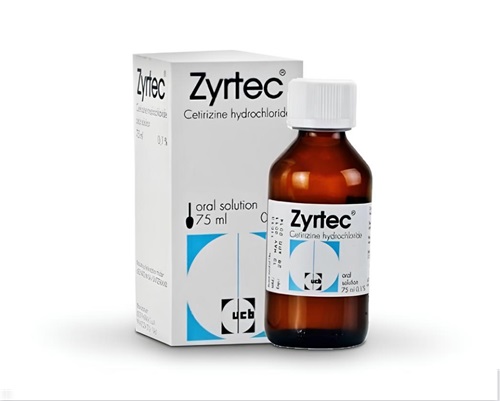Description
Tradename:
Allerfen
Compound:
Each tablet contains:
Fexofenadine hydrochloride 180 mg.
Auxiliary components:
lactose, microcrystalline cellulose, colloidal silicon dioxide, povidonek30, crospovidone, talc, magnesium stearate, opadry rosea.
Properties:
Antiallergic agent, H1-histamine receptor blocker. Fexofenadine is an active metabolite of terfenadine. After a single or 2-time dose, the drug exhibits an antihistamine effect starting from 1 hour, reaching the maximum effect after 6 hours and lasting 24 hours. Does not have a sedative effect. There was no evidence of tolerance to these effects after 28 days of dosing.
Indications:
Elimination of symptoms associated with seasonal allergic rhinitis and uncomplicated skin manifestations of chronic idiopathic urticaria.
Directions for use and dosage:
For adults and children aged 12 years and older, the recommended dose is 180 mg once a day before meals.
Children under 12 years of age: The efficacy and effectiveness of fexofenadine hydrochloride has not been studied in children under 12 years of age.
Studies in special risk groups (elderly patients, with renal and hepatic insufficiency) have shown that for patients in these categories no dose adjustment is required.
Contraindications:
hypersensitivity to fexofenadine, terfenadine or other components of the drug.
Precautionary measures:
As with most new drugs, data in the elderly and patients with impaired renal function or hepatitis are limited, and fexofenadine hydrochloride should be prescribed with caution in these special groups. Groups of patients with a history or ongoing cardiovascular disease should be warned that antihistamines may cause side effects such as tachycardia and palpitations.
Concomitant use with ketoconazole and erythromycin may cause an increase in fexofenadine plasma concentrations. Antacids containing aluminum and magnesium may reduce the absorption of fexofenadine; the recommended interval between doses of these substances is at least 2 hours.
Pregnancy: There are no adequate and well-controlled studies in pregnant women. Fexofenadine should be used during pregnancy only if the potential benefit justifies the potential risk to the fetus.
Lactation: There are no data on the content of fexofenadine in breast milk when taken by breastfeeding women. It has been observed to pass into breast milk. The use of fexofenadine during breastfeeding is not recommended.
Effect on driving ability: In objective tests, fexofenadine has been shown to have no significant effect on the function of the central nervous system. This means patients can drive or perform tasks that require concentration. However, to identify sensitive people who have unusual reactions to drugs, it is recommended to test individual reactions before performing complex tasks.
Side effects:
Fexofenadine is generally well tolerated. The most commonly reported symptoms (1-10% of cases) were headache, fatigue, dizziness or drowsiness, and nausea. In placebo-controlled studies, weakness, insomnia, nervousness, sleep disturbance, tachycardia, palpitations, and diarrhea were noted with an incidence of less than 1%. In rare cases (less than 0.1%), exanthema, urticaria, itching, angioedema, difficulty breathing, shortness of breath, redness of the skin, and anaphylactic reactions were observed.
Storage method:
Store at a temperature not exceeding 30 degrees in a dry place, out of reach of children.
Package:
The cardboard pack contains 2 blisters of 10 tablets, paper instructions.









